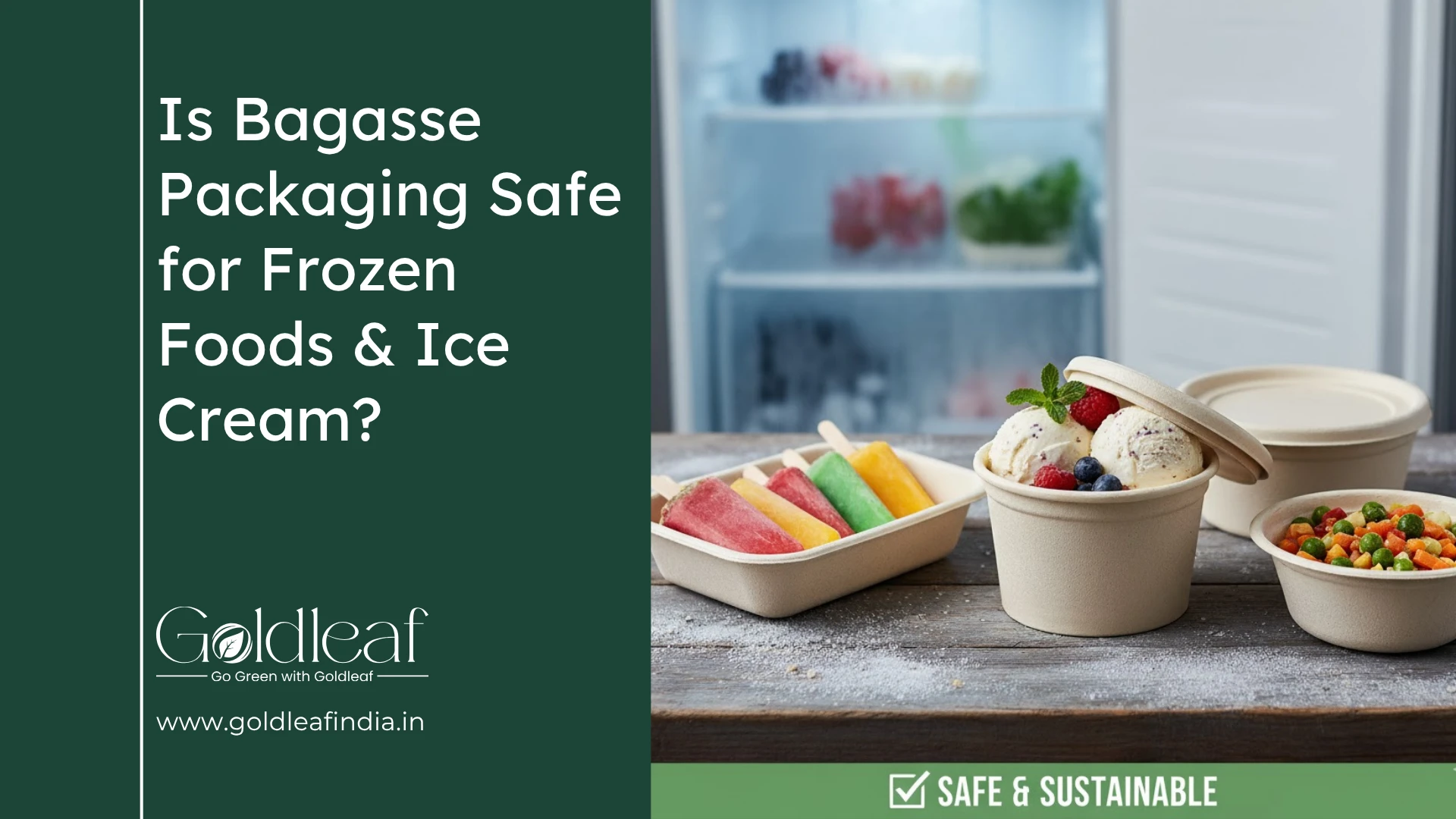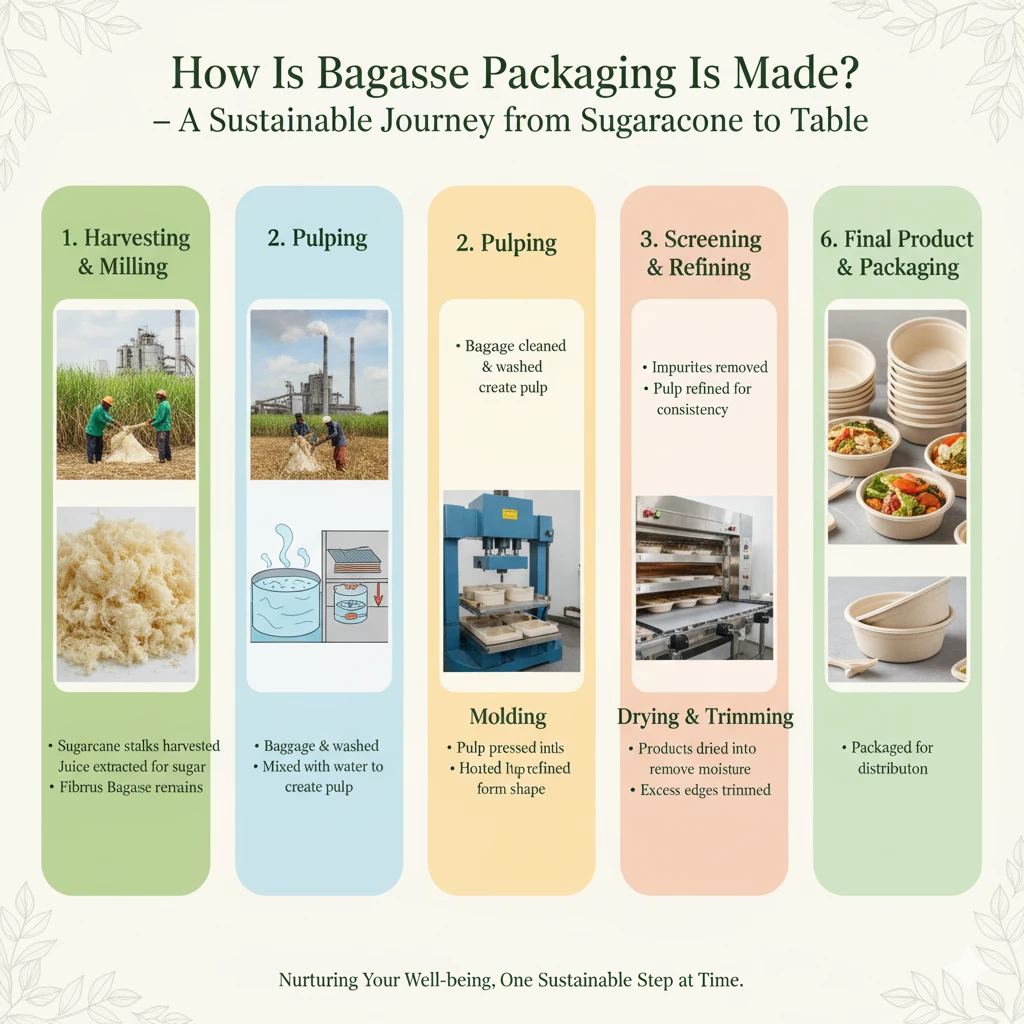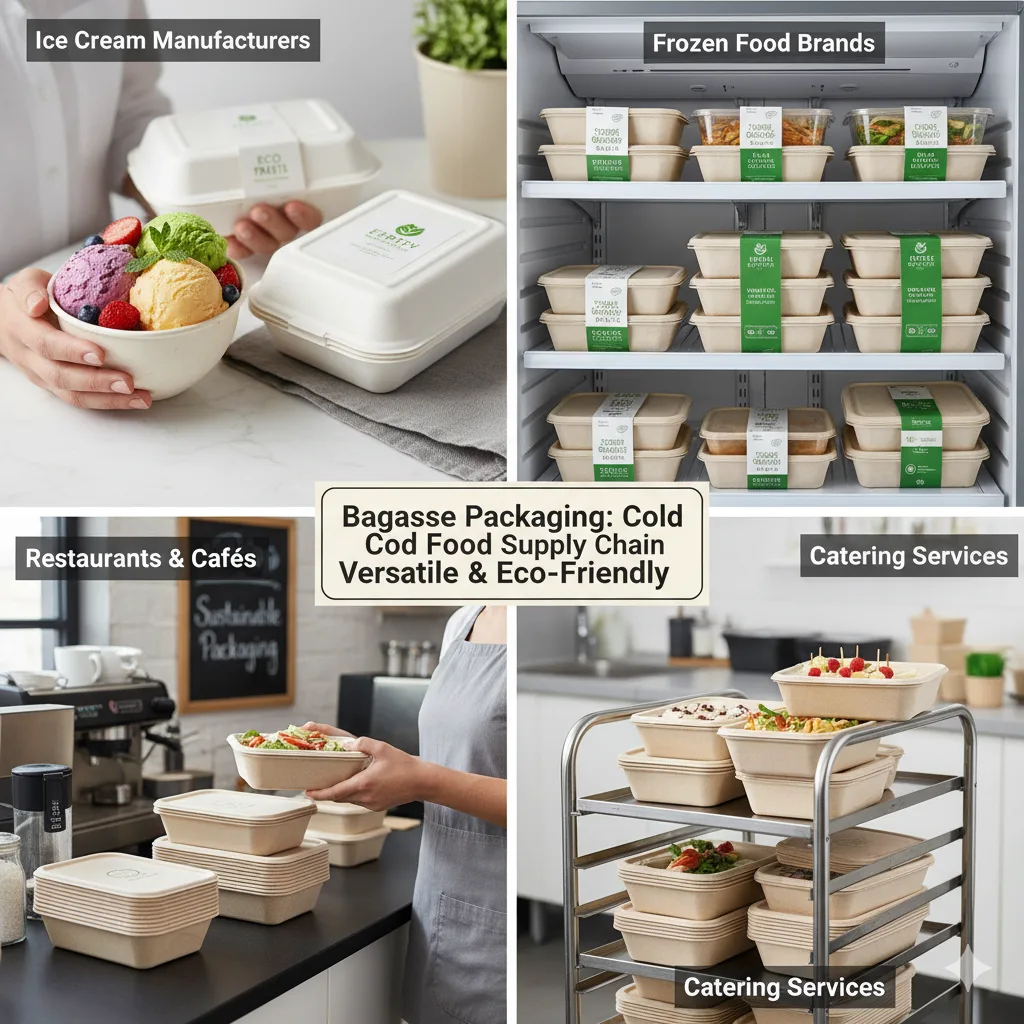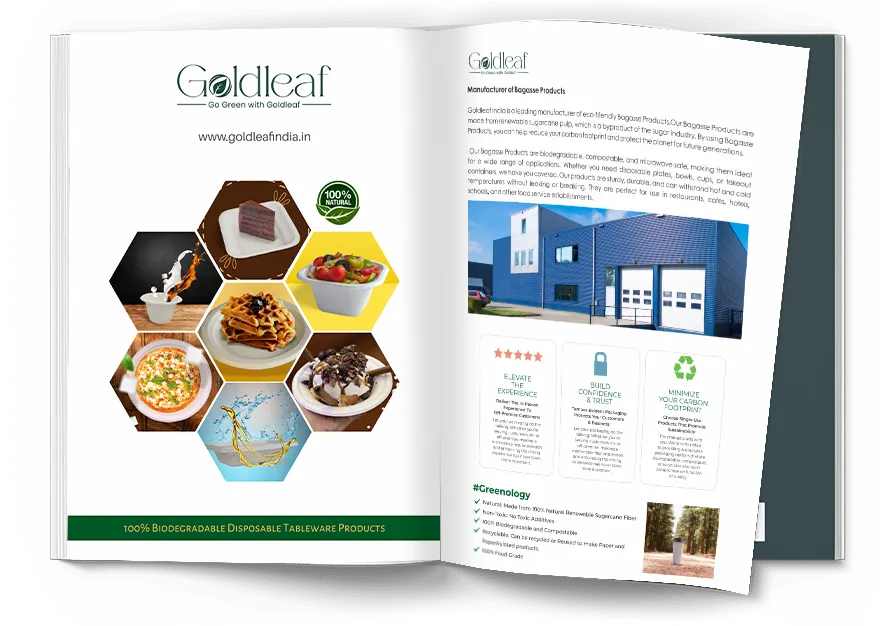Связаться с нашей командой

- 656
In recent years, the shift toward eco-friendly food packaging has gained significant momentum. Brands and consumers alike are searching for sustainable solutions that don’t compromise quality or safety. Among the many alternatives, bagasse packaging made from sugarcane fibers has become a top choice.
But a common question arises: Is bagasse packaging safe for frozen foods and ice cream? Let’s explore how this eco-smart material performs under freezing conditions and why it’s revolutionizing the food packaging industry.
What Is Bagasse Packaging?
Bagasse is a natural byproduct of sugarcane processing. Once the juice is extracted, the remaining fibrous pulp is repurposed to create biodegradable packaging materials. The result is durable and eco-conscious bagasse boxes, bowls, clamshells, and takeaway containers that serve as perfect replacements for plastic or Styrofoam.
Unlike conventional packaging, bagasse packaging material is completely compostable and decomposes naturally without harming the environment. It’s also grease- and moisture-resistant, making it ideal for both hot and cold food storage.
How Is Bagasse Packaging Made?

The manufacturing process involves cleaning and pulping sugarcane fibers, then molding them into different shapes under heat and pressure. This technique produces strong, food-safe containers that maintain their structure across a wide range of temperatures.
Because bagasse food packaging is made purely from organic fibers, it doesn’t contain toxic chemicals, plastics, or coatings that could contaminate your food even in extreme temperature conditions.
Is Bagasse Packaging Safe for Frozen Foods?
Yes, bagasse packaging is completely safe for frozen foods. Its natural fiber structure provides excellent resistance to low temperatures. Unlike plastic, which can become brittle and crack when frozen, bagasse containers maintain their shape and strength.
They don’t absorb moisture or allow freezer burn, ensuring your food remains fresh and intact. Whether it’s frozen meals, meat products, or desserts, bagasse takeaway boxes and sugarcane containers perform efficiently without any risk of chemical leaching.
Key Benefits of Using Bagasse Packaging for Frozen Foods
• Completely biodegradable: Decomposes naturally within 90 days.
• Temperature-resistant: Suitable for freezing, microwaving, and short oven reheating.
• Leak- and grease-proof: Keeps food texture intact.
• Eco-friendly manufacturing: Made from renewable bagasse sugarcane packaging material.
• Food-safe: Certified for direct contact with edibles.
These features make bagasse takeaway containers a smart choice for businesses that value both sustainability and product safety.
What Types of Frozen Foods Work Best with Bagasse Food Packaging?
Bagasse packaging is versatile and suitable for a wide range of frozen applications, from individual desserts to ready-to-eat meals.
Ideal Frozen Food Applications
• Frozen Meals & Ready Foods: Bagasse takeaway boxes and trays.
• Frozen Desserts & Ice Cream: Bagasse bowls and cups.
• Frozen Fruits & Vegetables: Sugarcane containers with lids.
• Frozen Baked Goods: Bagasse clamshells or boxes for portioned servings.
Best Practices
• For commercial packaging, ensure proper sealing with compostable films.
• For home storage, avoid overfilling containers to prevent cracking during freezing.
Foods with minimal moisture and balanced texture store best in cold-resistant bagasse containers, ensuring consistent performance and food safety.
Can You Store Ice Cream in Bagasse Containers?
Absolutely! Bagasse bowls and bagasse clamshells are perfect for ice cream storage. They can withstand temperatures as low as -25°C without deforming or leaking. The natural fibers form a strong barrier that prevents moisture absorption keeping the ice cream smooth and creamy.
Moreover, bagasse packaging has been tested and approved for direct food contact by international safety standards such as FDA and EU regulations. It doesn’t alter the taste, smell, or quality of your frozen products, making it a reliable choice for food businesses and home use alike.
How Does Bagasse Packaging Compare to Traditional Frozen Food Packaging?
Here’s how bagasse packaging stacks up against conventional options used in the frozen food industry:
| Feature | Bagasse Packaging | Plastic | Styrofoam | Paperboard | Aluminum |
|---|---|---|---|---|---|
| Temperature Resistance | -40°F to 200°F | -20°F to 180°F | -10°F to 150°F | Limited | Excellent |
| Moisture Resistance | High | Moderate | Poor | Low | Excellent |
| Food Safety | Non-toxic | May leach chemicals | Unsafe when heated | Coating required | Safe |
| Environmental Impact | Compostable, renewable | Non-biodegradable | Polluting | Recyclable | Recyclable but high energy |
| Cost Efficiency | Competitive | Moderate | Low | Moderate | High |
Verdict: Bagasse offers an ideal balance of cold performance, safety, and sustainability, outperforming plastics and Styrofoam while maintaining cost-effectiveness for businesses.
What Should Businesses Consider When Switching to Bagasse Food Packaging?
For companies planning to adopt sustainable frozen food packaging, a few key factors must be evaluated:
• Choose certified suppliers meeting FDA, BPI, and ASTM standards.
• Conduct product testing in actual freezer and transport conditions.
• Consider cost vs. long-term savings from improved brand perception.
• Highlight eco-friendly branding to attract conscious customers.
• Ensure storage and sealing compatibility with your existing supply chain.
Switching to bagasse supports both regulatory compliance and brand differentiation, strengthening your sustainability commitment.
Applications of Bagasse Packaging in the Frozen Food Industry

• Ice Cream Manufacturers: Use bagasse bowls and clamshells for eco-friendly dessert packaging.
• Frozen Food Brands: Pack ready-to-eat or ready-to-cook items in bagasse takeaway containers.
• Restaurants & Cafés: Store and serve chilled dishes in sugarcane takeaway containers.
• Catering Services: Opt for bagasse trays and boxes for transporting cold food safely.
These applications show how versatile bagasse packaging material has become across the cold food supply chain.
Tips for Using Bagasse Containers for Frozen Foods
To get the best performance from bagasse food containers, follow these simple tips:
• Ensure tight sealing to prevent moisture exposure.
• Avoid overfilling or stacking unevenly in the freezer.
• Keep storage temperatures stable.
• Dispose of used packaging responsibly by composting it.
With proper handling, bagasse boxes and takeaway containers can maintain their integrity throughout freezing and thawing cycles.
Conclusion
So, is bagasse packaging safe for frozen foods and ice cream?
Yes it’s one of the safest and most sustainable solutions available today. From bagasse bowls for ice cream to bagasse takeaway boxes for frozen meals, this innovative material combines functionality with environmental responsibility.
Choosing sugarcane bagasse packaging not only ensures food safety but also supports a cleaner planet one frozen treat at a time.
© 2024 , Goldleaf ,
Все права защищены.
Made & Managed by Lightlink Solutions




